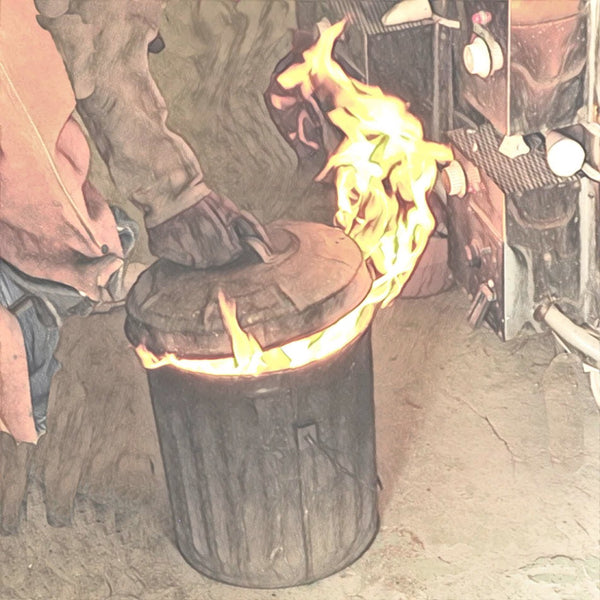What is Raku
Raku is a method of firing pottery developed by a 16th century Japanese monk who wanted to produce tea bowls that matched the simple beauty and austere grace of the traditional tea ceremony. A form of prayerful meditation, a tea master’s precise movements, slow pace, and calling for harmony and compassion make the ceremony very spiritual.
The monk’s raku tea bowls challenged the flawless porcelain perfection revered at the time. Pulling red hot pottery from a kiln to cool rapidly, produces irregular surfaces, tiny fissures, and a rough earthy texture. This deliberate pursuit of imperfection was the monk’s rebellious statement of core values.
It was later discovered that placing the fiery pottery in a closed container filled with combustible materials causes a beautiful chemical reaction.
J. Davis Studio uses locally recycled newspapers to cushion the drop which immediately bursts into fire. As the flames thrash around searching for oxygen, the reduction of air creates unpredictable, one-of-a-kind, asymmetrical colorings. Iridescent swirls of red, blue, and ochre mingled with gossamer copper and gold are frozen in place with a quick spray of cold water.
Living in Far West Texas all his life had a profound effect on John Davis’ pottery. The rugged beauty and history of the peaceful Chihuahuan Desert helped inspire John’s raku line.
Even though the raku firing process originated in Japan, the rustic look creates the essence of an ancient civilization, like an artifact unearthed from a primitive Indian camp ground around the Rio Grande riverbed. Many raku pieces break during the thermal shock treatment, so each surviving raku ware is truly a treasure to be cherished.

